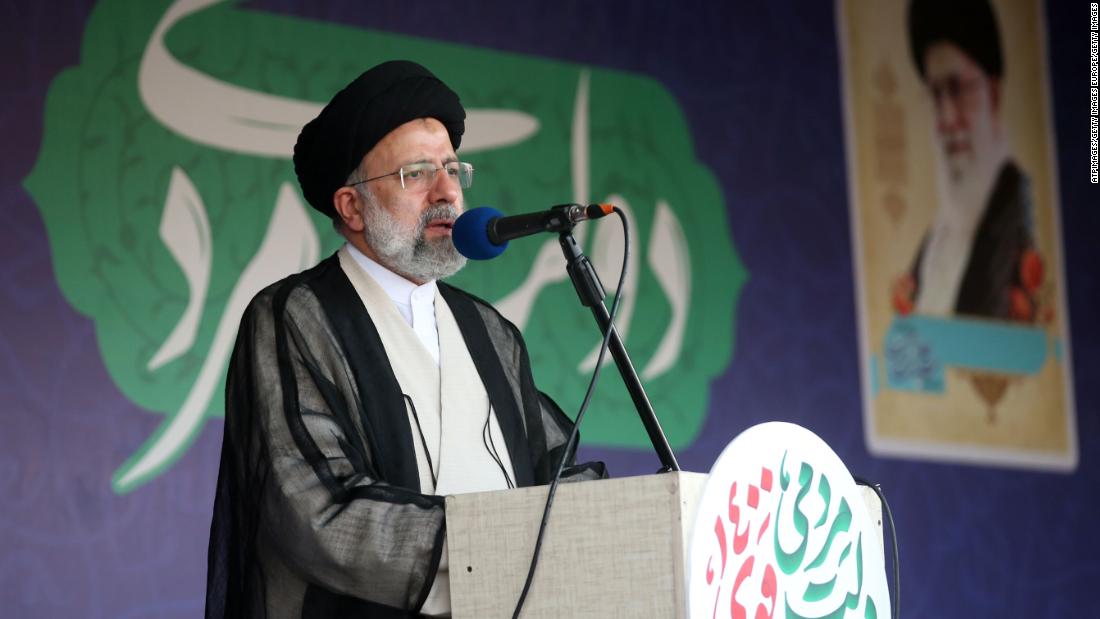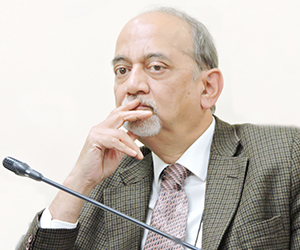The Presidential election in Iran has resulted in Mr. Ebrahim Raisi’s victory by 62 percent of the votes. The election coincided with the talks in Vienna to revive the nuclear deal. Both the events came at a time when the situation in Afghanistan is worsening. A protracted civil war or a Taliban takeover in Kabul will have implications for the security of the region. The mujahedin victory in Afghanistan presaged trouble in J&K. There does not appear to be any change in Talibans’ behaviour. They have not accepted Afghanistan’s constitution or the plural civil society in that country.
Mr. Raisi won 17.926 million of the total of 28.93 million votes cast. This represented 62 percent votes in an election, which saw a voter turnout of 48.8 percent. The second highest votes were won by Mohsen Rezai, who headed IRGC for a number of years. He was followed by Hemmati with 2.41 million votes and Qazizadeh with just below a million votes. Thus, Mr. Raisi had a comfortable lead over his opponents. However, this was lower than President Rouhani’s tally in 2017, who had secured 57 percent of votes in an election with a 73 percent voter turn-out.
The Presidential election is unlikely to change Iran’s foreign policy stance. Mr. Raisi had affirmed during the third and last Presidential debate that he would abide by the nuclear deal. “We will be committed to the JCPOA as an agreement that was approved by the Supreme Leader,” (Source: WSJ, Iran Sends a Message to Biden, June 19, 2021.) In his first press conference after winning the election, Mr. Raisi said ‘We support the negotiations that guarantee our national interests. He, however, ruled out meeting Biden. (Source: Reuters, Iran’s Raisi backs nuclear talk, rules out meeting Biden, June 22,2021) The President-elect has been briefed by Araqchi, who is leading the Iranian team for negotiation on the revival of the nuclear deal. This has been done on the instructions of President Rouhani in the interest of smooth take-over.
Though the nuclear deal did not include regional situations, its revival will help lessen tensions in the region. It may be recalled that following President Trump’s withdrawal from the deal in May 2018, there were incidents of attacks on shipping in the Gulf in May and June 2019. There was an attack on the Saudi oil processing facility in Abqaiq in September of that year. In January 2020, Qassem Soleimani was assassinated in a drone attack in Baghdad.
Since then there has been an attempt by all sides to reduce tensions. Iran has indicated that it is willing to engage with Saudi Arabia and Arab neighbors in a bilateral or regional framework. Earlier, this year, Saudi Crown Prince Mohammad Bin Salman stated in a public statement ‘At the end of the day, Iran is a neighbouring country. All we ask for is a good and distinguished relationship with Iran.’ (Source: Tehran Times, Saudis may see opportunity in Raisi win to mend ties with Iran’, June 20, 2021) Since April, there have been discussions between Iran and Saudi Arabia in Baghdad. Iran has also revived its proposal for a Hormuz Peace Initiative (HOPE) involving multilateral talks between Gulf countries on regional security. Though it is too early to judge the outcome, these are hopeful signs of movement towards the lessening of tensions.
The negotiations over the revival of the nuclear deal are taking place at a time when the situation in Afghanistan is worsening. The US withdrawal from Afghanistan is expected to be completed shortly. This has intensified the power struggle in that country. Doha Accord between the US and Taliban included an American agreement to withdraw. There was a promise by the Taliban not to attack US targets in the future. It did not include a cease-fire. The Taliban have not shown any seriousness in negotiations over intra-Afghan dialogue. Their tactics clearly suggest that they wish to establish dominance, rather than joining a broad-based government. As the Foreign Secretary said recently, the Taliban’s relentless pursuit of power through violence has made it an uncertain environment in any sense. (Source: Indian Express, ‘Taliban power pursuit has led to uncertainty in Afghanistan: Shringla’, June 19, 2021) They have not accepted Afghanistan’s constitution, and wish to establish an Islamic Emirate.
It will be instructive to recall Taliban policies and actions in the 90s. They persecuted Hazaras, who are Shias. They killed Iranian diplomats in Mazar-e-Sharif in 1998. They destroyed Bamian Budha, which was on the UNESCO list of world heritage monuments. Recently, Iranian Foreign Minister Javed Zarif said that the Taliban represent an existential threat to Pakistan and a security threat to Iran and India. A Taliban victory in Afghanistan will encourage Tehriq-e-Taliban-e-Pakistan (TTP). Talibanisation of a nuclear Pakistan is a bigger threat than Taliban control of Afghanistan. Taliban is an extremist Sunni movement. It represents an ideological challenge and a security threat to Iran. There are also security implications for India. The mujahedin victory in Afghanistan in the 80s was followed by a terror campaign in J&K.
Revival of nuclear deal and removal of sanctions against Iran would bring 2 million barrels per day of Iranian crude export to the world markets. This should help soften the oil prices, which have witnessed a sharp spike in recent weeks. Iran has an interest in recovering its market share for crude oil in India. India has an interest in the upstream sector in Iran. Thus, there could be a convergence of interests between the two countries. It is worth bearing in mind that the oil market is no longer a seller’s market. The advantage has shifted towards the buyers. This was a consequence of the oil price collapse following the pandemic. However, there is a still more potent reason for the decline of oil demand in the long run. Concern over climate change is bound to lead to a switch towards non-fossil fuels. There is also a trend towards electrification of transport and industry sectors.
Apart from oil purchases, India has interests in gas imports. Gas could be a bridge fuel in India’s energy transition. The Government’s policy is to encourage the use of gas in cooking. The target is to boost gas’s share in the energy basket from a little over 6 percent currently to 15 percent. Iran can meet India’s demand for gas. It has the world’s second-largest gas reserves. There is a proposal for a Middle East Gas Pipeline, which could connect Iran, Oman, and India. An under-sea pipeline will avoid all the geopolitical complications of a land pipeline running across Pakistan.
Iran could also provide easy connectivity to India for reaching Afghanistan and Central Asia. The development of the International North-South Transit Corridor (INSTC) will help. India is developing Chabahar port, though the pace has been slow due to sanctions. The sanctions have affected banking channels. The revival of the nuclear deal could ease the situation.
(The paper is the author’s individual scholastic articulation. The author certifies that the article/paper is original in content, unpublished and it has not been submitted for publication/web upload elsewhere, and that the facts and figures quoted are duly referenced, as needed, and are believed to be correct). (The paper does not necessarily represent the organisational stance... More >>
Image Source: https://edition.cnn.com/2021/06/19/middleeast/ebrahim-raisi-iran-election-intl-hnk/index.html











Post new comment